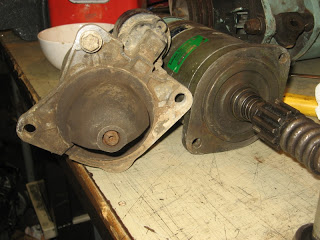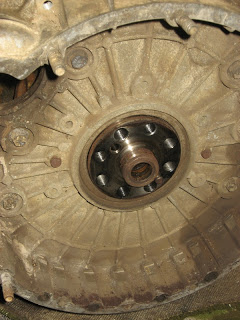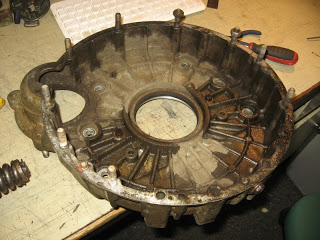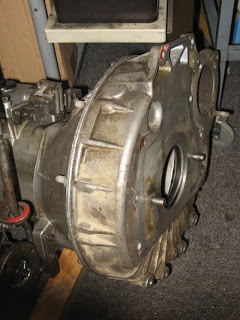
Another Engine Update
Spent another few hours in the garage with the 200TDi last night. The main aim was to find out whether the 24v starter motor from the Series III would fit into the flywheel housing of the 200TDi. The answer was, sadly, no.

In addition to this, the starter gears on the two motors engage from different directions. On the 12v starter the wheel spins out from the motor body to engage the flywheel. On the 24v starter the gear spins back towards the motor body. The teeth on the flywheel are shaped on one side to allow the starter gear to engage easily, but flat on the other side. I’m not 100% sure, but I suspect you’d see the same difference when comparing the 12v and 24v Series III starters, so maybe it’s not a massive problem. I haven’t got a clue why the military starter engages from the opposite direction.
Finally, I also noticed that the curved cutout for the starter in the 200TDi flywheel housing interferes with the bizarre spring on the end of the 24v motor. With a bit of crafty filing it might be possible to sort this, but the other problems mean it’s probably not worth bothering.


One of the biggest modifications when fitting the 200TDi (with or without the turbo) onto a series gearbox is to adapt the flywheel housing. This means removing a couple of pins and one stud then drilling and tapping new stud holes as well as counterboring holes for some allen head bolts. If I didn’t have a milling machine this would be a scary thing!
First step was to remove the extra stud, which turned out to be reasonably simple.

